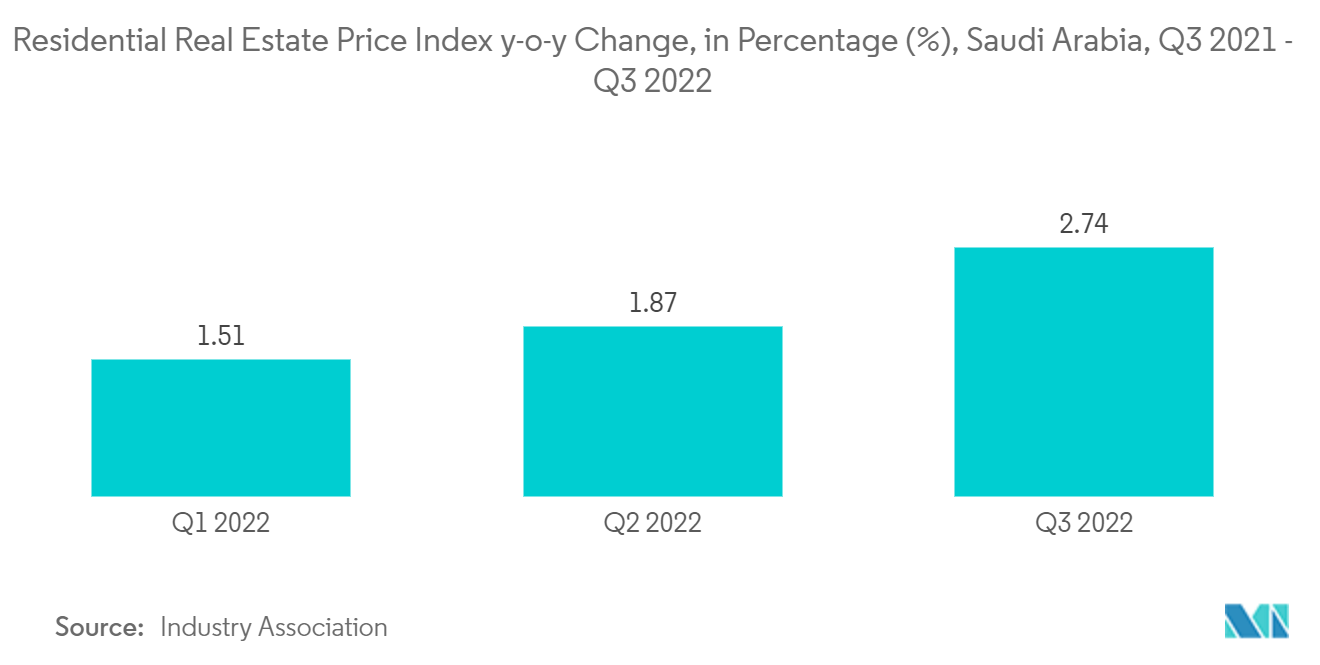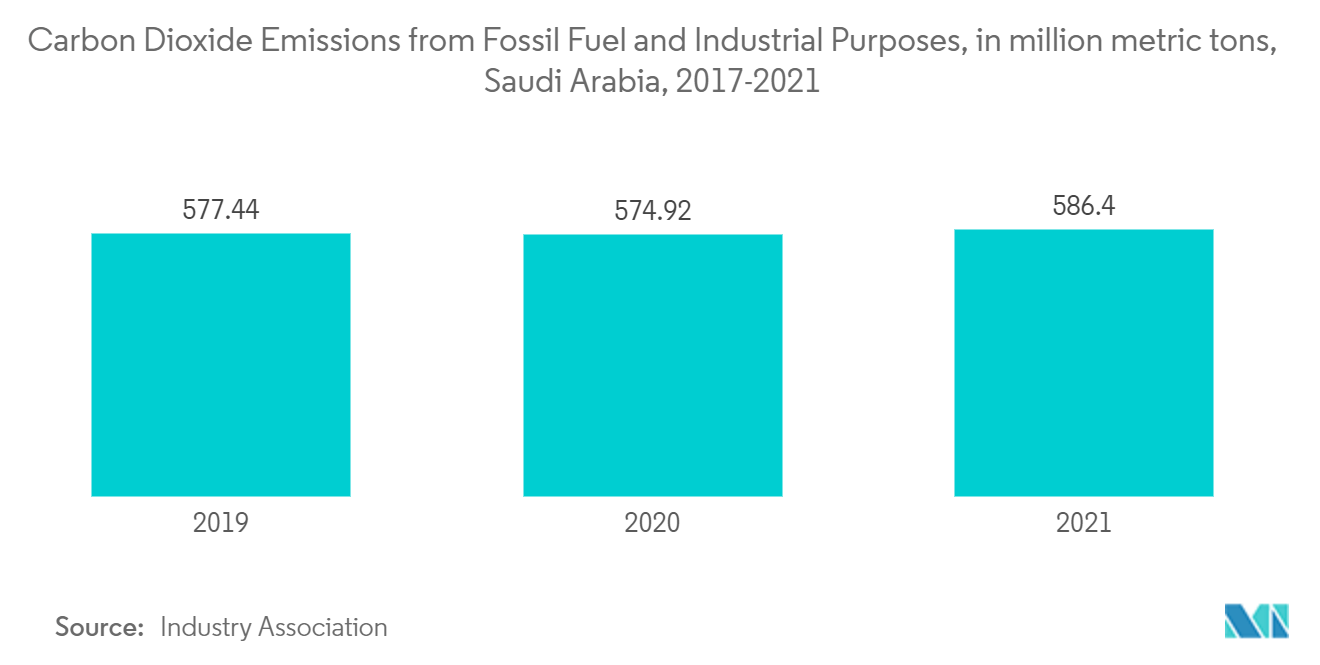Market Trends of Saudi Arabia Manufactured Homes Industry
This section covers the major market trends shaping the Saudi Arabia Manufactured Homes Market according to our research experts:
Rising Construction Costs May Drive the Market Growth
- A range of factors is resulting in higher building costs in Saudi Arabia. This includes the global building boom, which has created greater demand for construction materials such as steel. In 2021 the price of aluminum, copper, and iron ore increased by between 45% and 51% and the price of steel reinforcing bars rose by as much as 46% in some parts of Saudi Arabia. Another factor pushing up construction costs in Saudi Arabia is the kingdom's dependence on imported building materials, particularly from China and Europe. Average ready-mix concrete prices in Saudi Arabia rose marginally year-on-year to SAR 207.24 (USD 55.17) per cubic meter in Q3 2022. Average timber prices rose to SAR 3,651.75 (USD 972.10) per cubic meter (+10.8%) and SAR 49.85 (USD 13.27) per meter (+8.7%), respectively.
- Construction costs in Saudi Arabia are expected to soar by nearly 20%. With rising construction costs the prices of new properties rise as well. House prices in Riyadh have risen at their fastest pace in at least five years, with apartment prices surging by 20% from May 2021 to May 2022. The resultant impact was a decline in deal numbers, which fell by 27% over the same period. The decline in deals is indicative of the fact that the rising prices make constructing or buying a property less affordable general public. Thus, if the surge continues then they may start looking for alternatives.
- Manufactured homes cost less because they are mass-produced and built on assembly lines, Manufactured homes are much more affordable than traditional homes. According to the Manufactured Housing Institute, manufactured housing costs about half of what a traditional house costs on a square-foot basis. The total cost of manufactured homes is around USD 100-200 per square foot; in contrast, a traditional new-build home averages USD 150 per square foot, and can easily go as high as USD 400, depending on the locality. Also, a modular home may be more expensive than a comparable manufactured one.
- The average cost of a 2,000-square-foot modular home runs about USD 240,000. A comparable manufactured home costs about USD 150,000-170,000. Customers can end up saving hundreds of thousands of dollars by buying a manufactured home as opposed to a traditional home. Consequently, with the rising construction costs the demand in the manufactured homes market may also rise.

Environmental Goals to Contribute to the Demand in the Market
- GHGs are the major pollutant in the environment and the construction industry is considered 19% responsible for it. Around 40% of the carbon footprint is generated by construction and buildings together due to various processes like lighting, cooling, and heating of building materials. By the year 2050, the carbon emissions from buildings are set to aim at zero as per the world resources Institute paper Paris Agreement. But as per today's scenario, there is not even 1% of the total buildings that can help in achieving the target of zero.
- Saudi Arabia emitted 586.4 million metric tons of carbon dioxide (MtCO) from fossil fuel and industrial purposes in 2021. The country is one of the largest producers of CO emissions per capita worldwide, at roughly 19 metric tons per person. Saudi Arabia is pushing the envelope on environmental sustainability by aiming for carbon capture targets of 44 million tons annually by 2035 to achieve net-zero emissions by 2060. Manufactured homes could play a major role in this regard.
- Companies that build manufactured homes generate up to 90% less waste than traditionally built homes, according to the Manufactured Home Institute. Transporting and assembling a manufactured home on-site causes significantly less environmental damage than the process of building a traditional home. Additionally, because of the effective development process, there is less wastage when building a manufactured home and the scraps are often reused. Besides a more environmentally friendly construction or design, the materials that are now used to build manufactured homes are selected for their energy efficiency.
- A prime example is comprehensive insulation to reduce heat loss and heating fuel energy usage. By adding environmentally friendly/safe insulation to a manufactured home's underside, walls, and roof alone, the overall homes' energy use decreases up to 31%. Due to less energy usage and reduced environmental damage manufactured homes may see increased adoption in the coming years.

